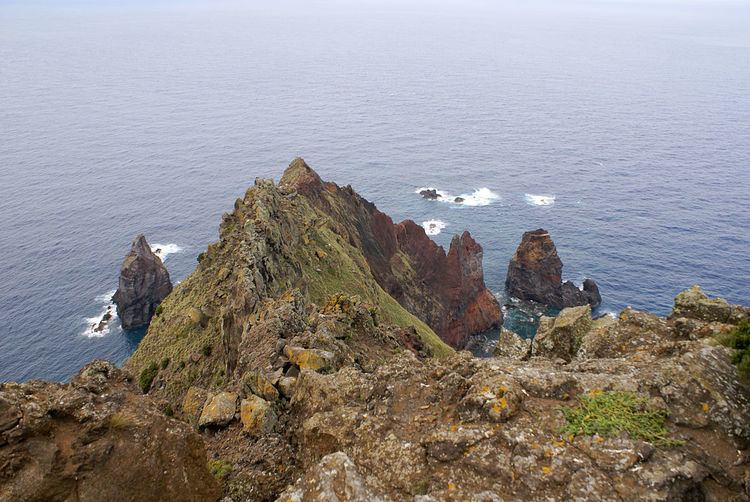 | ||
The Baixa da Ponta dos Rosais is an oceanic plateau north-northwest of the coast of Ponta dos Rosais, municipality of Velas, island of São Jorge, in the Portuguese archipelago of the Azores. The seamount region is located 3 miles (4.8 km) from the coast, and 9 miles (14 km) from the central port of Velas, from where it is a popular destination for divers who frequent the Azores.
Contents
Geography
Pertaining to the northern civil parish of Rosais, Ponta dos Rosais is an extension of the north-northwest and south-southeast fissural formation of the island, along a fault system that extends from São Miguel to São Jorge, called the Terceira Rift. Effusive and explosive submarine eruptions across these fissural faults gave rise to the long, slender island of São Jorge. Oceanic plateaus extending into the ocean, north and south of the island, are offshoots of these formative forces.
The Baixa is one of these plateaus, made of submerged oceanic basalt cliffs created by fissural tectonics, with accentuated slopes aligned northwest to southeast from Ponta dos Rosais. Its location, with a mix of open sea and currents, means that the area's condition varies and is frequently turbulent.
Biome
Sandy deposits from pyroclastic surges at the point of Rosais has meant that a small area of the Baixa is favourable for the congregation of sea mammals and marine species.
Within a radius of 20 metres (66 ft) there are elevated number of animal species, in addition to sea plants. Predominantly, the area is a habitat for brown alga (Stypopodium zonale), red alga (Asparagopsis armata), Sawfish, Vadigo (Campogramma glaycos), Frigate tuna (Auxis thazard) and anchovy, in addition to Needlefish, Grouper and Hake, among others; there are more than 69 different species (the area has a 7.2 Margalef scale/biodiversity index-rating), and it has been defended as a candidate for protection, owing to the biodiversity in the region.
